
|
||||||||||||||||||||||||||||||||||||||||||||||
En fin 1939 devant la hausse la protection de blindage des chars, l’État Major allemand lança une fiche programme sur un matériel plus puissant que le 37 mm ou le 50 mm. Les sociétés Krupp et Rheinmetall reçoivent donc des ordres pour développer un canon antichar de 75 mm. Il y a urgence car les allemands sont confrontés dans des steppes russes à des engins dont ils ne soupçonnaient même pas l’existence et qui résistent aux tirs de canon antichar de 50 mm Cette arme devint l’arme standard antichar de l’armée allemande et elle fut fabriquée durant tout le conflit et beaucoup d’autres pays d’Europe centrale l’ont utilisée après la deuxième guerre mondiale . notamment par l'Albanie,la Bulgarie la Tchécoslovaquie la Finlande La Hongrie et la Roumanie
23500 canons furent produits dont 6000 furent utilisé sur des engins blindés .En effet de nombreux blindés , comme les Marder II et III les Pz Kw IV dernières versions avec le canon KwK de 75 mm L/43 et KwK L/48.ou leJagdpanzer 38 (t) équipé avec un 75 mm PaK 39 L/48, dépourvu de frein de bouche ont utilisé ce canon D’ailleurs le canon de notre AM X. 13 n’est ni plus ni moins qu’un lointain héritier de ce canon. Description de l’arme.
Le Pak 40 est une extrapolation du Pak 38 duquel il reprend l’affût et le blindage du bouclier Caractéristiques
constructeur Rheinmetall Borsig.
Calibre 75 mm. Longueur 3. 70 Largeur.2 m a 2.95 Flèches ouvertes. Culasse semi automatique. Élévation -5° + 22° Azimut + 65°. Poids 1,4 T. Munitions. Portée standard entre 1500 et 1800 mètres. Poids 6.8Kgs
Le Pak 41.
C’est le concurrent malheureux du Pak 40.
Ce modèle construit par Krupp était radicalement différent de celui de Rheinmetall par l’utilisation du métal rare comme le tungstène dans sa fabrication Celui-ci lui conférait une puissance de feu plus importante mais le pénalisa rapidement et la pénurie de métal précieux ne pouvait pas permettre une construction en série de la pièce aussi la construction fut abandonnée après 150 engins. Les armes construites furent affectées à des centres d’entraînement et Lorsque les munitions furent épuisées les tubes furent refondus et les affûts furent affectés à des Pak40. Il se présentait comme une arme anti char classique sauf pour la longueur du tube. Son train de roulement était plus large et son bouclier novateur Caractéristiques
fabricant Krupp calibre 75 mm Longueur 4.320m Largeur 2 m à 2.95 m (flèches ouvertes) Elévation -12 °+ 45° azimut 60°. Poids de l’engin 1 t 350 Cadence de tir 14 coups/minute Portée efficace maximale 2000 m Portée maximale 7000 m Pour augmenter la puissance de l’arme il fut décidé de produire un obus à sabot détachable Les munitions utilisées du 75 7.5Pzgr Patr 39 anti char classique 12 kilos. 7.5 Pzgr Patr 40 antichar avec pointe de tungstène il fut fabriqué jusqu’en 1940. 75 Spgr Patr 34 explosif standard. 75Spgr Patr H1/B il devait succéder au Patr 40 mais n’a pas tenu ses promesses. Pour augmenter la puissance de feu antichar il a été fabriqué un obus avec sabot détachable c’était un obus stabilisé Autres Photoscopes (Others Walk Arounds) Canon Anti Char PaK 40 Belgique Canon Anti Char PaK 40 détails Canon Anti char PaK 40 Moscou Canon Anti Char PaK 40 Utah Beach Canon Anti Char PaK 40 Draguignan Canon anti Char PaK 40 Draguignan Canon Anti Char PaK 40 Moscou Canon Anti Char Pak 40 Novion Canon Anti Char PaK 40 Parola Canon Anti Char Pak 40 Saumur Canon Anti Char Pak 40 Duxford Canon Anti Char Pak 40 Beltring 2007 Canon Anti Char Pak 40 Carthagène Voir Aussi See Also Raupenschlepper .7.5cm Pak40/4 auf Raupenschlepper Ost (Sf) Russie Raupenschlepper .7.5cm Pak40/4 auf Raupenschlepper Ost (Sf) Raupenschlepper .7.5cm Pak40/4 auf Raupenschlepper Ost (Sf) Raupenschlepper Gebirgsschlepper Ost Arlon Raupenschlepper Ost 01 The Pak 40 7.5cmPak40 (Hünrengrab)
In late 1939 before the increase protection of the tanks armour , the german OKW began a detailed program for a new material more powerful than the 37 mm or 50 mm.
Krupp and Rheinmetall thus receive orders to develop an anti-tank gun 75 mm. It is urgent because the Germans are facing in the Russian steppes to news tanks that they were not even looking existence and resistant to the fire of anti-tank gun 50 mm So it was therefore decided to produce quickly a new anti-tank gun calibre 75 mm. The firm Rheinmetall Borsig won the contract to develop the weapon, which was not delivered to troops at the end of November 41. This weapon became standard antitank weapon of the German army and it was manufactured during the conflict and many other countries of Central Europe have used after the Second World War like Bulgarie Tchecoslovakia Rumenia Albania Hungary and Finland. Moreover, the gun of the french AMX 13 is neither more nor less an heir to the gun. Description of the weapon.
The Pak 40 was extrapolated from the Pak 38 which incorporates the carriage and the armoured shield. In fact this new long-barreled gun is very similar in appearance to the standard German 50-mm antitank gun, known as the 5-cm Pak 38, but this new gun has certain structural differences which may readily be detected: its shield is angular, and has a flat frontal section with two flat side pieces set at an angle of about 45° to the plane of the frontal section; its muzzle brake is broader and longer; and its sighting aperture is square. The carriage, is the same as the German 75-mm long-barreled tank gun, designate as the 7.5-cm Kw K 40 The differences between the 75-mm antitank gun and tank gun are the substitution, in the antitank gun, of mechanical firing and percussion primer for electric firing and primer; the chamber of the antitank gun is also probably much longer. The breechblock is of the semiautomatic, horizontally sliding type. This weapon is powerful but it is heavy and not easy to handle. Many pieces were abandoned by their crews as it was impossible to operate manually or with lighter gear. A report by the German army in January 44 said that it was impossible in daylight to change his position with the weapon without being detected. The weapon was fielded in all regiments where there was the antitank weapon . 23500 guns will be produicted and 6000 will be use on armoured vehicles like Marder II et III , Pz Kw IV last versions with KwK de 75 mm L/43 and KwK L/48 gun or theJagdpanzer 38 (t) with an 75 mm PaK 39 L/48, without muzzle breach The 75-mm antitank gun is mounted on a split-trail carriage, with torsion springing; this springing is automatically cut out when the trails are open. The light-alloy wheels are fitted with solid rubber tires. An unusual feature is a detachable third wheel, which can be fitted on near the trail spades, to permit easier manhandling. The gun has a double baffle muzzle brake. This weapon is powerful but it is heavy and not easy to handle. Many pieces were abandoned by their crews as it was impossible to operate manually or with lighter gear. A report by the German army in January 44 said that it was impossible in daylight to change his position with the weapon without being detected. The weapon was fielded in all regiments where there was the antitank weapon . Specifications manufacturer Borsig-Rheinmetall. Caliber-75mm. Length.3.70 Width2m.at..2.95.m max. Elevation.+22°.-5° Azimuth + 65 °. Weight 1.4 T. Munitions. Range standard between 1500 and 1800 metres. Weight 6.8Kgs The Pak 41.
It is the unfortunate competitor of the Pak 40.
This model built by Krupp was radically different from that of Rheinmetall by the use of rare metal such as tungsten in its manufacture This gave it a but the most important fire-power, but it was quickly penalized by the scarcity of precious metal The construction of this gun was abandoned after 150 guns. The weapons were built allocated to training centres and when ammunitions were exhausted tubes were melted down and carriages were assigned to Pak40. It was presented as an anti-tank weapon classic except for the length of the tube. His running gear was broader and his shield innovative Specifications Manufacturer Krupp 75 mm calibre Length 4.320m Width 2.95 m Elevation + 45 ° -12 ° 60 ° azimuth. Weight of the machine 350 t 1 Maximum range 2000 m To increase the power of the weapon he decides produced a shell Discarding sabot The ammunition used in the 75 7.5Pzgr Patr 39 anti tank classic 12 kilos. 7.5 Pzgr Patr 40 antitank with tungsten tip it was manufactured until 1940. 75 Spgr Patr 34 explosive standard. 75Spgr Patr H1 / B he would succeed the Patr 40 but has not kept its promises. To increase the firepower antitank it has been manufactured with a sabot shell was a shell stabilized
|
|
Droit d’auteur La plupart des photographies publiées sur ce site sont la propriété exclusive de © Claude Balmefrezol Elles peuvent être reproduites pour une utilisation personnelle, mais l’autorisation préalable de leur auteur est nécessaire pour être exploitées dans un autre cadre (site web publications etc) Les sources des autres documents et illustrations sont mentionnées quand elles sont connues. Si une de ces pièces est protégée et que sa présence dans ces pages pose problème, elle sera retirée sur simple demande. Principaux Collaborateurs:
Nb
de visiteurs:7067380 Nb
de visiteurs aujourd'hui:1534 Nb
de connectés:79 | ||||||||||||||||||||||||||||||||||||||||||||






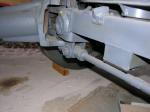
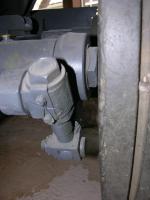
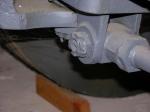
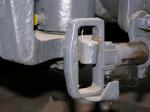
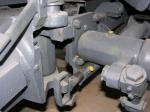


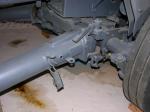




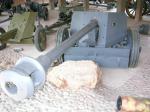
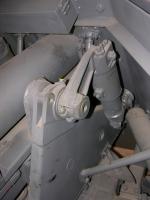
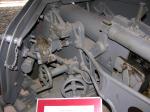
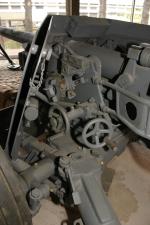

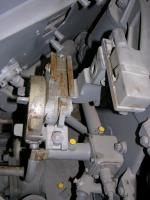
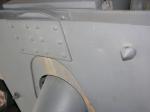

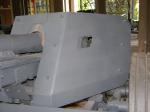


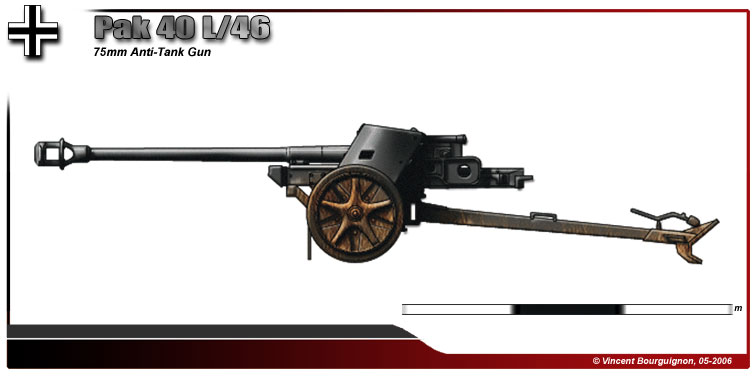
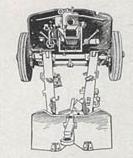

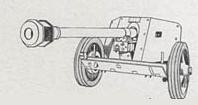
.jpg)